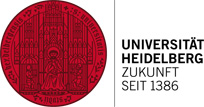Studying the Milky Way System
The Collaborative Research Centre (CRC 881) on “The Milky Way System” will continue its successful work at Heidelberg University for another four years. After an international expert evaluation, the German Research Foundation (DFG) approved a second funding period in the amount of more than nine million euros. The research collaboration established in 2011 is located at the Centre for Astronomy of Heidelberg University and studies the origin of the Milky Way as well as fundamental questions of galaxy formation. Non-university research institutions involved are the Max Planck Institute for Astronomy and the Heidelberg Institute for Theoretical Studies. The spokesperson of the collaborative research centre is Prof. Dr. Eva Grebel of the Institute for Astronomical Computing.
The research work of CRC 881 revolves around our own galaxy, the Milky Way, a typical spiral galaxy and hence a member of the most common class of massive galaxies in the universe. The scientists involved in the collaborative research centre investigate the origins and evolution of the Milky Way in order to clarify fundamental principles of galaxy formation. “Due to our location in the Milky Way, our galaxy is a unique laboratory for the detailed exploration of the physical processes determining galaxy evolution,” says Prof. Grebel. “In the Milky Way system we can even engage in ‘galactic archaeology’ and use the stars as fossil indicators of chemical evolution and the cosmic matter cycle.” Other aims of the research work done by CRC 881 are to test the predictions of cosmological models on galaxy formation and to investigate the small-scale distribution of dark matter.
Prof. Grebel underscores the significant progress made in this field during the first funding period. In simulations, the scientists were able to generate realistic disc galaxies like the Milky Way for the first time. A powerful new supercomputer aids the CRC scientists in performing these complex calculations. “Thanks to the comprehensive spectroscopic sky surveys in which our CRC is involved, we were also able to measure the properties of the stars in different components of the Milky Way disc with high accuracy. This enabled us to test and refine theories on disc formation,” explains the Heidelberg astronomer. Moreover, more than 3,000 open star clusters were characterised. “We discovered countless new substructures at the outskirts of the Milky Way, probably leftovers of dwarf galaxies that the Milky Way ‘swallowed up’,” Prof. Grebel emphasises. “Significant breakthroughs were also made concerning the question how stars originate from molecular clouds.”
One important focus during the second funding period of CRC 881 will be the scientific analysis of the data from the European “Gaia” satellite mission. Heidelberg researchers play a lead role in this mission. Prof. Grebel explains that “Gaia” and other major sky surveys as well as advances in theoretical modelling have ushered in a “golden” decade of research of the Milky Way, for which Heidelberg astronomers are “excellently positioned”. “With the comprehensive research strategy of our collaborative research centre we can make an essential contribution to understanding how our home galaxy formed and how it functions, and hence will be able to address many fundamental questions about galaxy formation and evolution.”
CRC 881 also collaborates with the House of Astronomy on specific outreach projects for schools, advanced teacher training and public lecture series.

